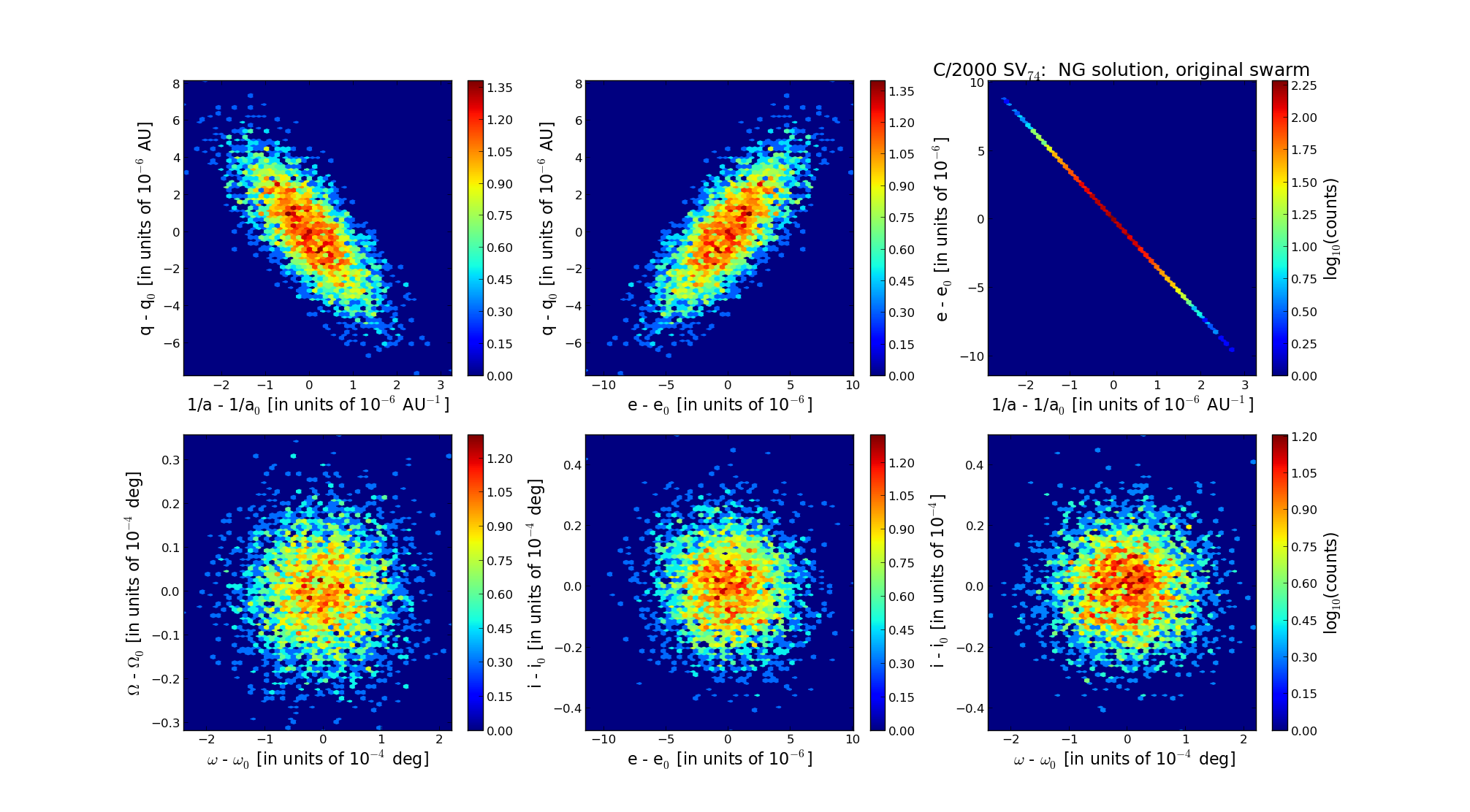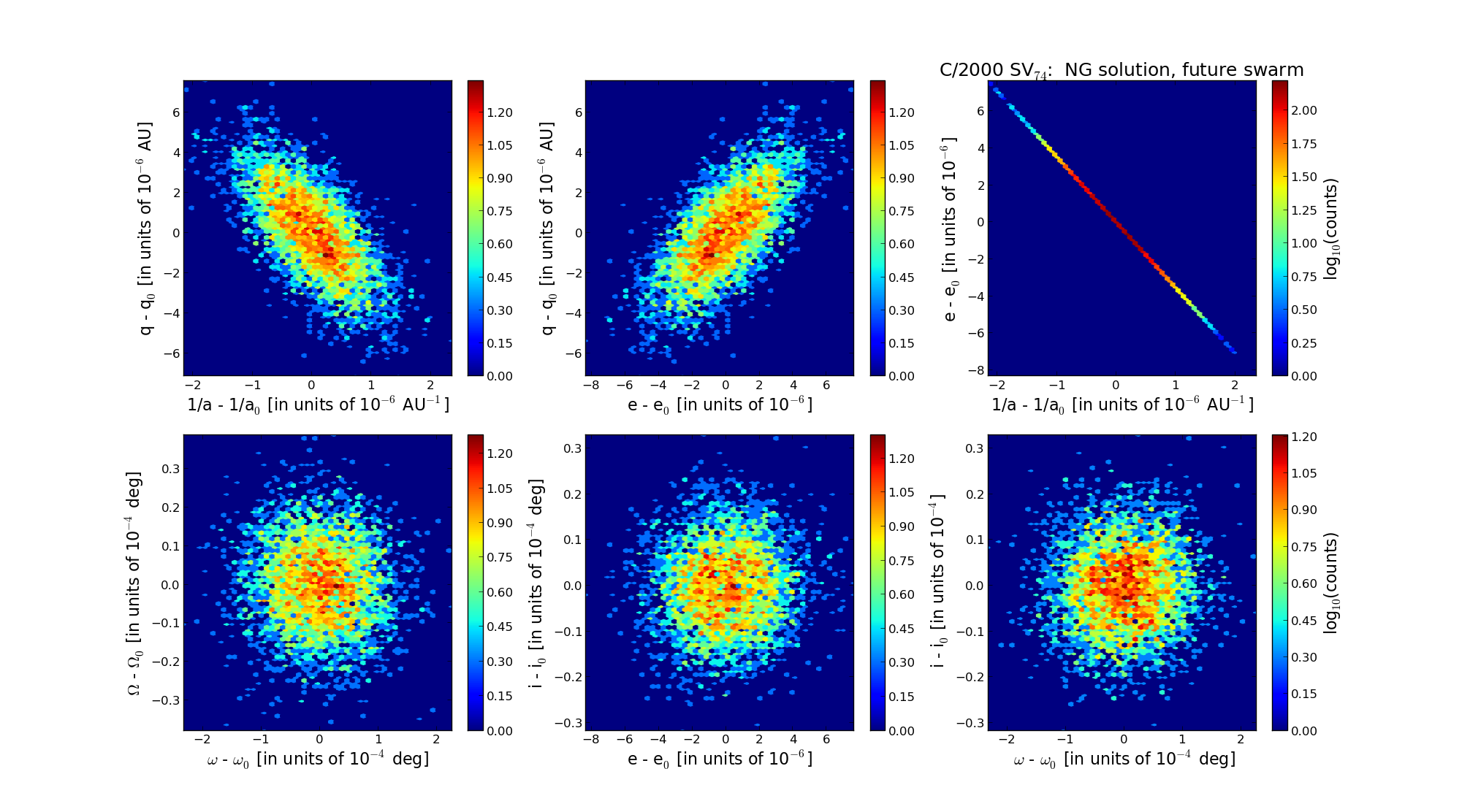| Solar System Dynamics & Planetology Group |
 |
C/2000 SV74 LINEAR |  |
| Solar System Dynamics & Planetology Group |
 |
C/2000 SV74 LINEAR |  |
| number of observations | 2207 |
| number of residuals | 4382 |
| data interval | 2000 Sep. 5 — 2005 May 12 |
| rms [arcsec] | 0.67 |
| orbit quality class | 1a+ |
| Epoch (TT) | 20020506.0 | = JD 2452400.5 |
| time of perihelion passage (TT) | 20020430.474305 | ± 0.000103 |
| perihelion distance | 3.54159154 | ± 0.00000164 |
| eccentricity | 1.00479869 | ± 0.00000203 |
| argument of perihelion [deg] | 76.226371 | ± 0.000018 |
| longitude of the ascending node [deg] | 24.185273 | ± 0.000005 |
| inclination [deg] | 75.237137 | ± 0.000008 |
| inverse semimajor axis [10-6 au-1] | -1354.95 | ± 0.57 |
| Nongravitational parameters [10-8 au/day2] | A1 = 6064.600 ± 76.399 | A2 = 550.610 ± 59.670 | A3 = -595.980 ± 21.675 |

| Epoch (TT) | 16980827 | |
| time of perihelion passage (TT) | 20020430.081183 | ± 0.000312 |
| perihelion distance | 3.52665909 | ± 0.00000215 |
| eccentricity | 0.99967965 | ± 0.00000272 |
| argument of perihelion [deg] | 76.492790 | ± 0.000065 |
| longitude of the ascending node [deg] | 24.152992 | ± 0.000010 |
| inclination [deg] | 75.360945 | ± 0.000012 |
| inverse semimajor axis [10-6 au-1] | 90.84 | ± 0.77 |

| Epoch (TT) | 23040413 | |
| time of perihelion passage (TT) | 20020429.659128 | ± 0.000293 |
| perihelion distance | 3.53676654 | ± 0.00000209 |
| eccentricity | 1.00018991 | ± 0.00000213 |
| argument of perihelion [deg] | 76.072968 | ± 0.000061 |
| longitude of the ascending node [deg] | 24.187876 | ± 0.000010 |
| inclination [deg] | 75.352548 | ± 0.000008 |
| inverse semimajor axis [10-6 au-1] | -53.69 | ± 0.60 |